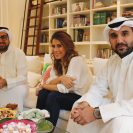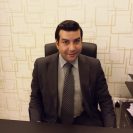Last month’s exhibition which took place at Sadu House titled “Material Rhythm” featured various local artists. One of them was Sultan Al-Samhan, who had displayed his artworks throughout Sadu House uniquely, even on the floor! He is a passionate 27-year-old artist and Architectural Designer at Gulf Consult that took the interpretations of Sadu to a new level, while also documenting the process behind it all in a beautiful set of videos, showcasing the intricate details of his work more closely. But now, he is taking us even deeper into what he gained from this whole experience.

It all started with five workshops at Sadu House prior to the exhibition, and in each workshop the topic varied, from screen printing, block printing, to music and more. But the main prompt was clear, and it was rhythm. As Sultan explains “It’s up to [us] how to interpret it, but it has to also relate to Sadu. And Sadu is a form of self-expression, so they said ‘take it and do what you want with it.’” That’s exactly what Sultan did, but he also went onto the route of experimentation, something he already enjoyed venturing into and implemented it as he discovered the depths of Sadu.
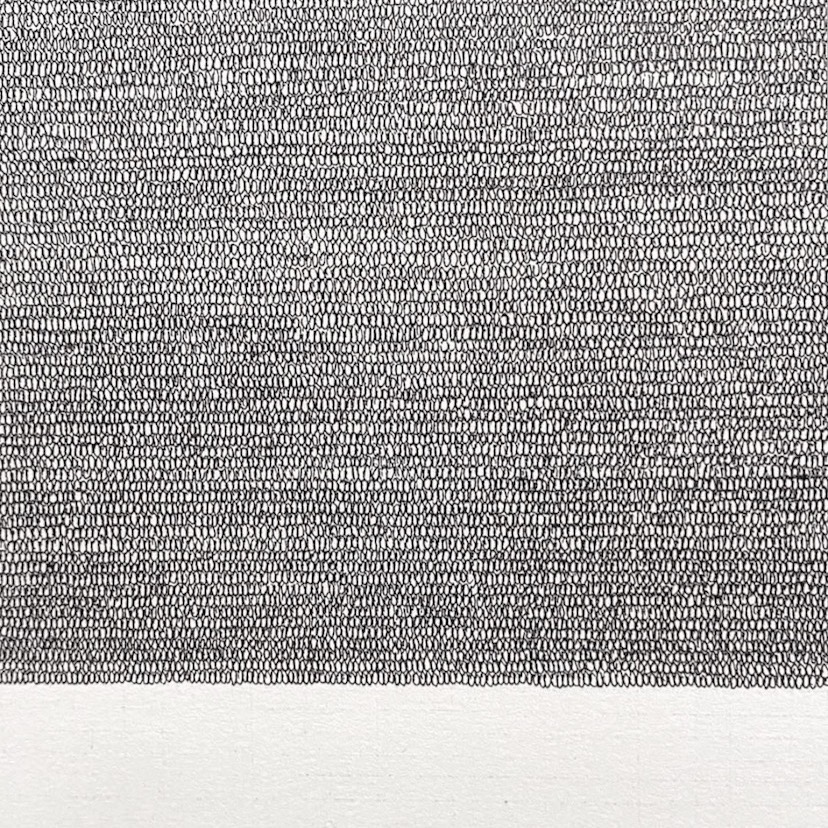

Before oil was discovered in Kuwait, people had a certain understanding of labor, quality and the craft of handmade materials such as Sadu. Sultan says that this is what intrigued him the most, and how nowadays, it feels very much diluted due to the fast-paced world we currently live in compared to the olden days. Not only that, but he also appreciated the connection of nature in-between everything else. “I have a huge respect for nature and the wisdom of [it], and I try to apply that to my experiments whether it’s in the architecture [or] art. It’s how the material changes when you change your perspective,” he says.

There were many layers to go through during the workshops, notions that Sultan was already curious about such as an adaptation to the local environment and a sensitivity to the nature of the materials. Sultan emphasizes how in Kuwait, there was a connection with the land when there used to be nothing but nature, and the resilience behind it is what he respected and applied onto his pieces. This project mainly highlighted ‘the process’, which is achieved through blurring the lines between process and end result. Such as the carpet canvas that Sultan displayed on the floor at the exhibition.

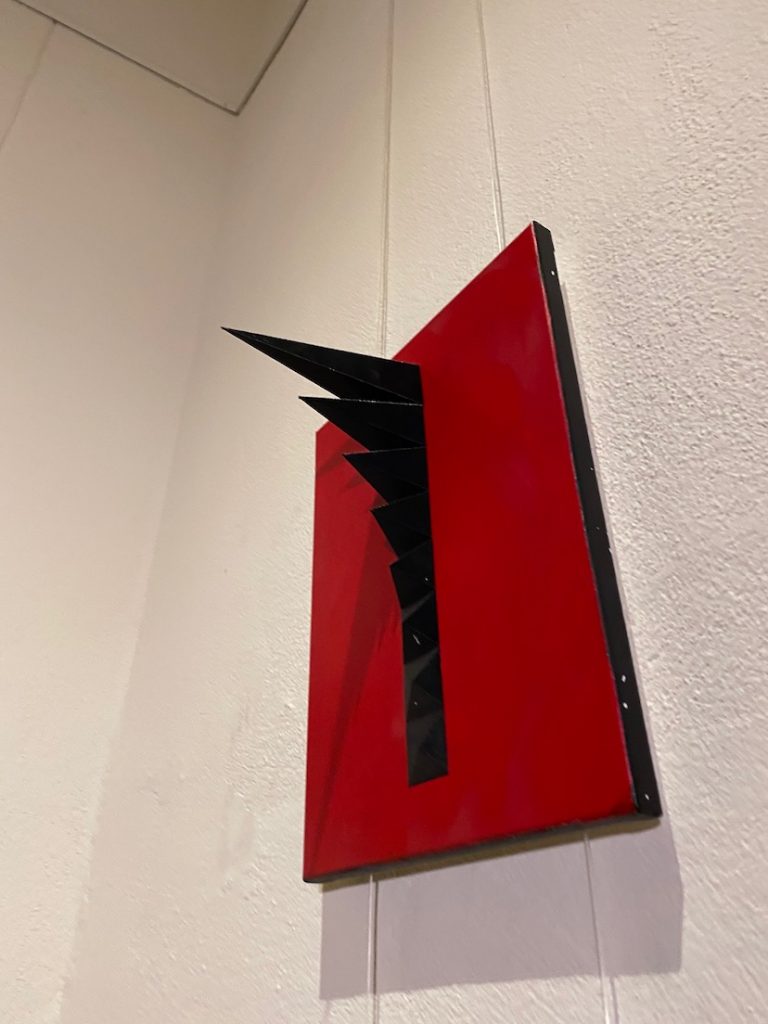
Sultan decided to focus on highlighting the importance of the handmade craft, as well as the use of material and how it is interpreted as he was working on his pieces. He says “I looked at the piece of Sadu, and started zooming in and out from macro to micro, and [at] each level you start noticing something different. Shaikha Altaf said something beautiful from the first workshop, which is when someone does something over and over, there’s a rhythm to their body when the subconscious is pretty much doing the work. It became that continual experiment, trying to use a different material each time, and the rhythm comes from the artist’s body and the handmade nature of it means that you get those off beats that add interest.”

Sultan also took screen printing to a whole other level, and the end product of different layers within it. It was inspired by his love of minimalism, and shapes such as the triangles, the tents, and the camels that were always seen on Sadu carpets. “There [are a] lot of technical skills that I picked up. For example, screen printing, I had no clue that it’s a very intensive process, and I could’ve used the same screen print and covered the whole courtyard. But again, going back to handmade, I had to [include] the motion behind the weaving process and the individual fiber, drew each module individually, then prepared the printing screen with emulsion, put it in the oven, then you get the film made and put it in a dark room. Take out the screen, mark out where the edges are, which is called ‘Registering,’ and then you apply the paint, then you can use it as many times as you want. But I thought no, just once. I thought the printing would take two to three hours, but it took about 12 to 13 hours just to print,” he says, that is how his craft was created, with utter dedication.

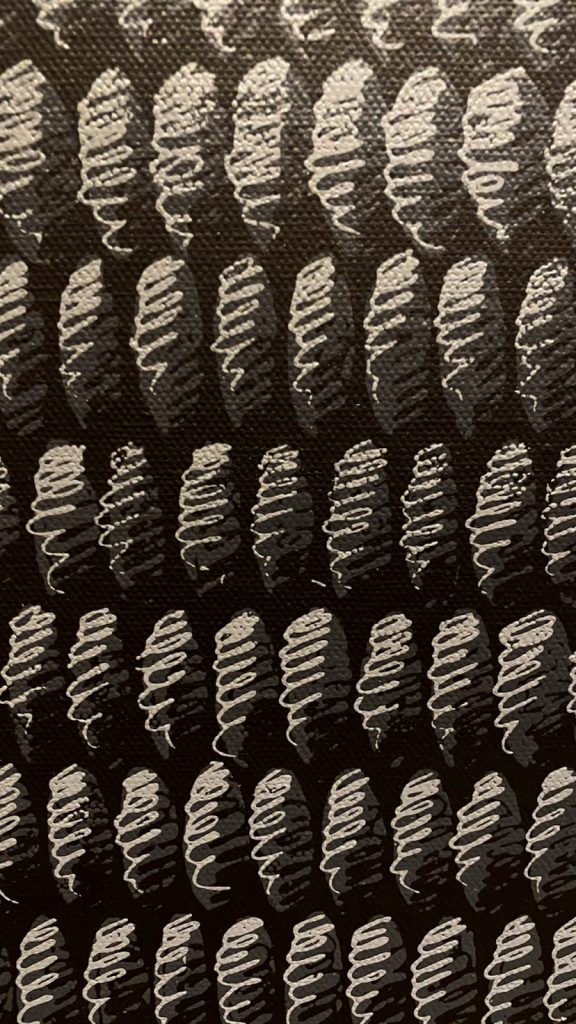
The feedback Sultan received after the exhibition was positive, and he enjoyed observing the different reactions of people coming in as they embraced and took hold of his pieces. The experience made him gain tons of new techniques that he is hoping to expand on in the future, but he shall keep it for himself at the time being to not ruin the upcoming surprises of his next projects!

UP CLOSE & PERSONAL QUESTIONNAIRE
What do you most value about your friends?
Ambition and dedication rank high. The winner has to be how they don’t care what everyone else is doing, they’ll do what they were going to do.
Which living person do you most admire?
Too tough to pick one… Da Vinci, Bucky Fuller, Einstein, Le Corbusier, Cy Twombly, Mies, Sol Lewitt and Monet are the first to come to mind. None of these are alive though. For that I’d go for Robert Irwin and Tadao Ando.
What is your greatest extravagance?
Expensive (for good reason) paint and stationery. Yeah, most definitely stationery.
What is your most treasured possession?
The collection of sketchbooks or the hard drives.
What is your greatest fear?
I see a lot of relatively young people with talent that put in the work and have good intentions. I worry luck or outside circumstance won’t be on their side, hope it will be.
What is your most marked characteristic?
Asked and heard, you’d never catch me without a pen or pencil.
Which talent would you most like to have?
I like to think talent is minor when compared to a skill being worked at, with that in mind I’d say coding for sure.
What is one trait you have that you are most grateful for?
Curiosity or patience.
What is the human trait you most dislike about others?
People who don’t push themselves, or accept things at surface value instead of questioning or exploring.
What are your favorite words to live by?
“Seek simplicity but distrust it.” – Whitehead
Where would you most like to live?
A quiet location surrounded by nature and the ocean. I have a soft spot for France as well, somewhere on the south coast.
If you could have any job, what would it be?
Architect or creative director. Orchestrate memorable experiences that are sensitive to material, light and space.
What would you consider your greatest achievement?
Can’t say much about it just yet, but a personal design being chosen for a future building that’s going to be in the city.
What do you hope for the future?
Tolerance for our differences, freedom of expression and a reconnection with nature.
Follow Sultan Al-Samhan on Instagram @salsamhan for more information, and check out the documentary videos of his process for the exhibition Material Rhythm. Main image courtesy of Bader AlMoulah.


